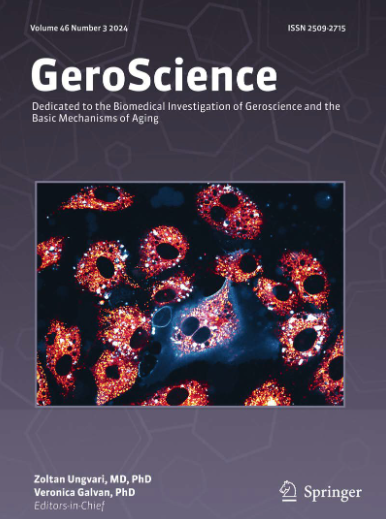量化安慰剂和试验参与对衰老犬认知结果测量的影响。
IF 5.4
2区 医学
Q1 GERIATRICS & GERONTOLOGY
引用次数: 0
摘要
安慰剂效应,或在惰性治疗后观察到的由于患者对治疗的期望而产生的积极效果,在人类医学中有充分的记录。然而,在兽医学中,主人的期望是他们宠物的代表,这一点仍然没有得到充分的研究,特别是对于认知能力下降的老年狗。为了解决这一差距,我们在一项随机对照试验(RCT)中检查了来自安慰剂组的21只狗(平均年龄:12.85岁,SD: 1.46),并将其结果与来自一项观察性纵向研究的17只狗(平均年龄:13.24岁,SD:1.56)进行了比较,以区分安慰剂效应和试验参与效应。两组人群的基线数据具有统计学上的可比性。通过两个远程管理的饲主问卷(犬认知功能障碍量表(CCDR)和犬痴呆量表(CADES))和三个室内认知评估(圆柱体任务、绕路和持续凝视)来评估认知变化。我们假设安慰剂效应大于试验参与效应,特别是在业主报告的测量中。配对t检验和效应量计算(Hedge’s g)用于计算6个月的变化。6个月后,安慰剂组观察到CADES的明显改善(g = 0.76),显著改善(p = 0.021),而CCDR组没有发现变化。相反,观察队列显示CCDR的小(g = 0.35)和显著(p = 0.03)恶化,CADES没有变化。两组患者的内部认知评估均未发现显著变化。我们得出的结论是,研究环境影响远程提供的所有者评估,CCDR在随机对照试验中比CADES更能抵御照顾者安慰剂效应。本文章由计算机程序翻译,如有差异,请以英文原文为准。
Quantifying placebo and trial participation effects on cognitive outcome measures in aging dogs.
The placebo effect, or the positive effects observed after an inert treatment which result from patients' expectations for the therapy, is well documented in human medicine. However, in veterinary medicine, where owner's expectations serve as a proxy for their pets, it remains underexplored, particularly for elderly dogs with cognitive decline. To address this gap, we examined 21 dogs (mean age: 12.85 years, SD: 1.46) from a placebo group in a randomized controlled trial (RCT) and compared their results to 17 dogs (mean age: 13.24 years, SD:1.56) from an observational, longitudinal study to distinguish placebo effect from trial participation effect. Both populations had statistically comparable baseline data. Cognitive changes were evaluated with two remotely administered owner questionnaires (Canine Cognitive Dysfunction Scale (CCDR) and Canine Dementia Scale (CADES)) and three in-house cognitive assessments (Cylinder Task, Detour and Sustained Gaze). We hypothesized that placebo effect would be greater than trial participation effect, particularly in owner-reported measures. Matched pairs T-tests and effect size calculations (Hedge's g) were used to calculate changes across 6 months. A strong (g = 0.76), significant (p = 0.021) improvement in CADES was observed in the placebo cohort after 6 months, while no changes were detected with CCDR. Conversely, the observational cohort showed a small (g = 0.35) and significant (p = 0.03) deterioration on CCDR, and no change in CADES. No significant changes were noted on the in-house cognitive assessments in either cohort. We conclude that study context influences remotely delivered owner assessments and CCDR is more robust against caregiver placebo effect in RCTs than CADES.
求助全文
通过发布文献求助,成功后即可免费获取论文全文。
去求助
来源期刊

GeroScience
Medicine-Complementary and Alternative Medicine
CiteScore
10.50
自引率
5.40%
发文量
182
期刊介绍:
GeroScience is a bi-monthly, international, peer-reviewed journal that publishes articles related to research in the biology of aging and research on biomedical applications that impact aging. The scope of articles to be considered include evolutionary biology, biophysics, genetics, genomics, proteomics, molecular biology, cell biology, biochemistry, endocrinology, immunology, physiology, pharmacology, neuroscience, and psychology.
 求助内容:
求助内容: 应助结果提醒方式:
应助结果提醒方式:


